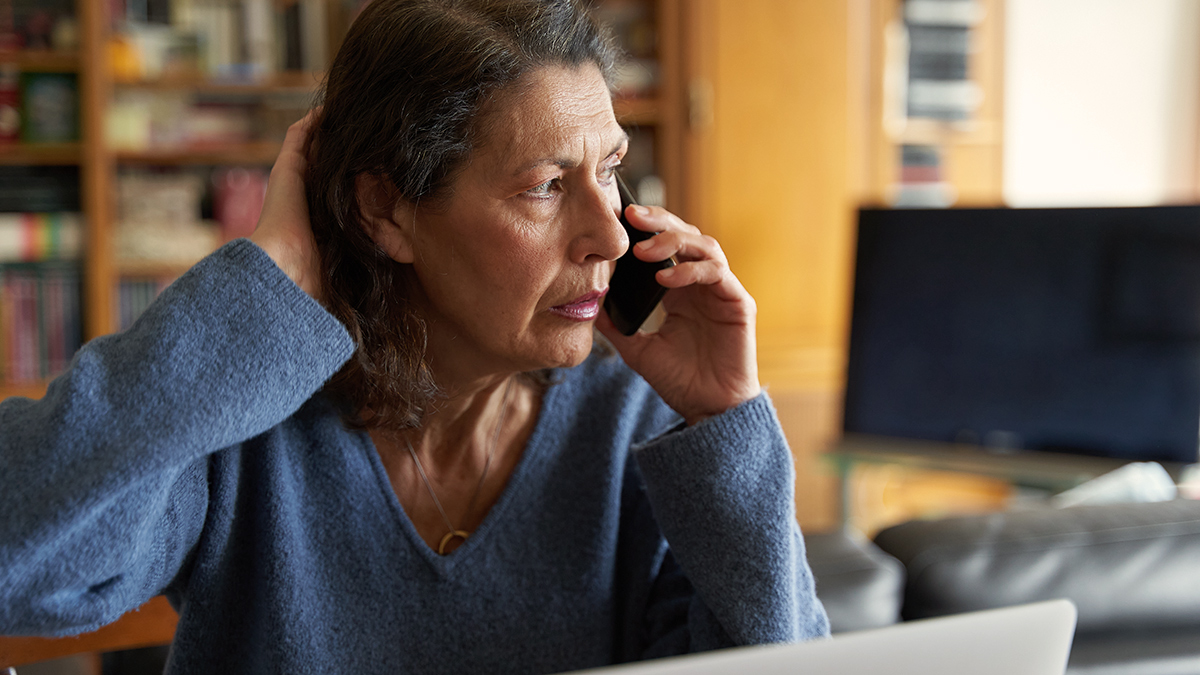Get our independent lab tests, expert reviews and honest advice.
Do you need a funeral director?
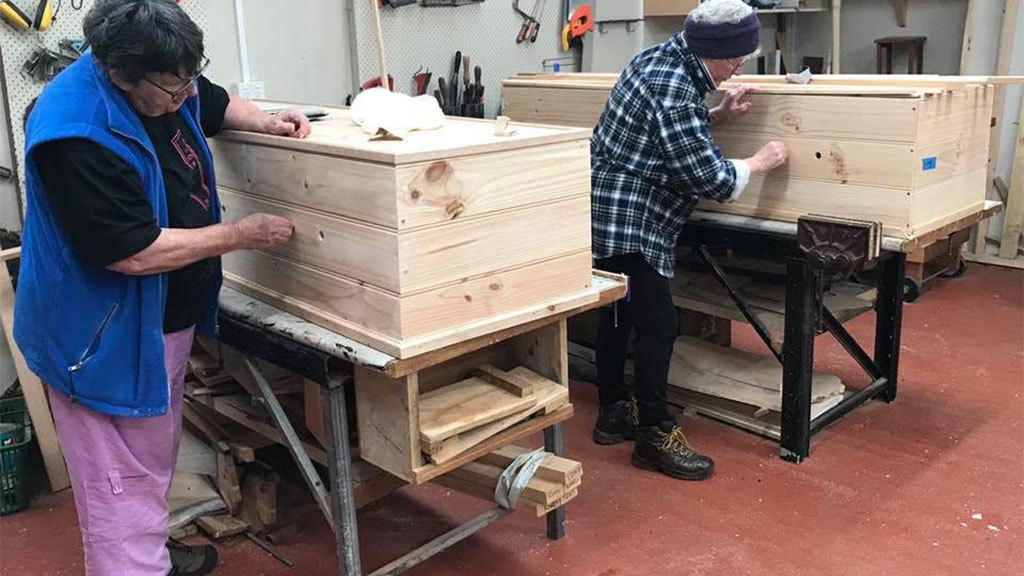
- A direct cremation – meaning no service, no attendance – is the cheapest option after a death.
- Throughout most of Australia, you can legally arrange almost all aspects of a funeral without using the services of a funeral director.
- Government regulations and industry policies complicate people’s ability to take funeral matters into their own hands.
- Most people choose to hire a funeral director to help navigate confusing legal requirements and the logistics involved at a time of grief.
Press play to hear more on our funeral industry investigation
Bringing the body home
In the mortuary of a funeral home in the Blue Mountains, a 95-kilogram body lay in a body bag, on the floor. Six figures crouched around it, determined.
One of them was Elspeth Hull, who shared two children with the man whose body now rested before her.
Elspeth had been estranged from him for 10 years. Now, she was bringing his body home to take care of him in death as she’d felt unable to in life.
On this September day in 2016, Elspeth, with the help of friends, grabbed a section of the body bag and rolled up the grey plastic to gain a sturdy grip.
The group lifted the body onto a wooden door from the back shed of a friend’s house, and lugged it into a tiger-striped troop carrier.
The vehicle belonged to Lola Rus-Hartland, a death doula and funeral planner.
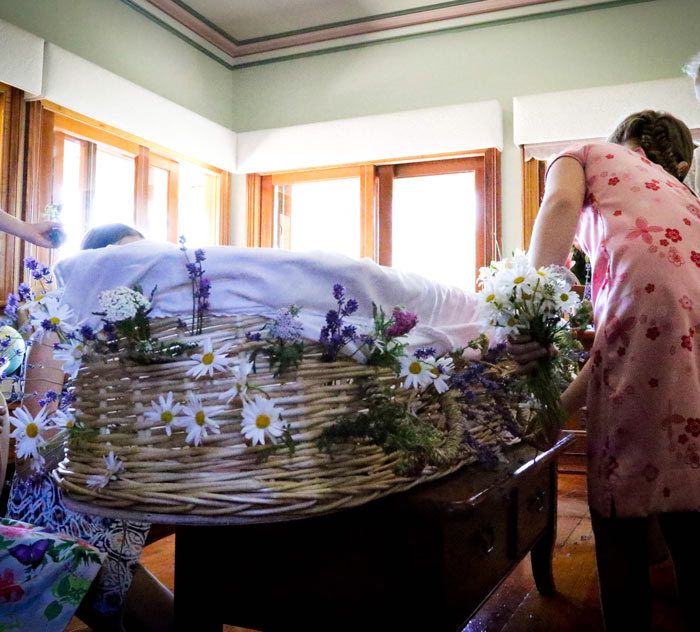
After maneuvering the body through the front door, two rooms and a narrow hallway of Elspeth’s house, they carried it into a spare bedroom and placed it on a cooling plate set at -15 degrees.
Elspeth and Lola washed the body and covered it with a layer of rust-coloured crushed velvet and sprays of gum leaves.
For four days it looked as though he was asleep: skin still pinkish-brown, face utterly relaxed.
“He looked so peaceful, of good colour, and as if he would wake at any moment with one of his characteristic cheeky remarks,” Elspeth says.
“Only by day five did his face very slightly start to turn grey and begin to actually look dead.”
From what Lola observes, it takes several days – rather than a brief viewing at a funeral home – for the human psyche to truly understand that a loved one has died.
“We need all our senses,” she says. “We need to touch them and realise they are no longer there; we need to see their facial expressions change… We need to no longer hear their breath, no longer hear their voice.”
He looked so peaceful, of good colour, and as if he would wake at any moment
Elspeth Hull
It troubles Lola that few people know they can keep a body at home, a practice she believes reduces the chances of complicated grief, a condition in which healing is disrupted and intense emotions are prolonged.
According to Dianne McKissock, co-founder of the Bereavement Care Centre, many people find that having the body at home allows them to regain control instead of having hospital staff or funeral directors dictate what happens next.
“Not everyone feels this way of course,” she says. “The important aspect is really about choice. We feel empowered when we can make choices that are in our best interests.”
The English-speaking world had largely privatised the grieving process by the end of World War II, as the strains of mass deaths turned mourners away from a tradition of caring for the body at home.
The funeral industry today is a response to our tendency to outsource the whole affair, but it also benefits from – and perpetuates – a huge knowledge gap in our culture.
And the premise that we need protection from the perceived grisly realities of a loved one’s death may be true in some cases, but not all.
The possibilities of DIY funerals
“It was really, really difficult to start Tender Funerals because everything was quite mysterious,” says Jenny Briscoe-Hough, the founder of a nonprofit funeral home.
“You don’t know what you don’t know, so it was really about finding out what actually happened after a death.”
The social enterprise has now organised hundreds of funerals, and Jenny says almost half of its clients choose to come into the mortuary to help prepare the body.
“They sometimes start out not wanting to do anything and by the end of it, they’re doing everything, including washing and dressing the body and helping us place it in a coffin,” she says.
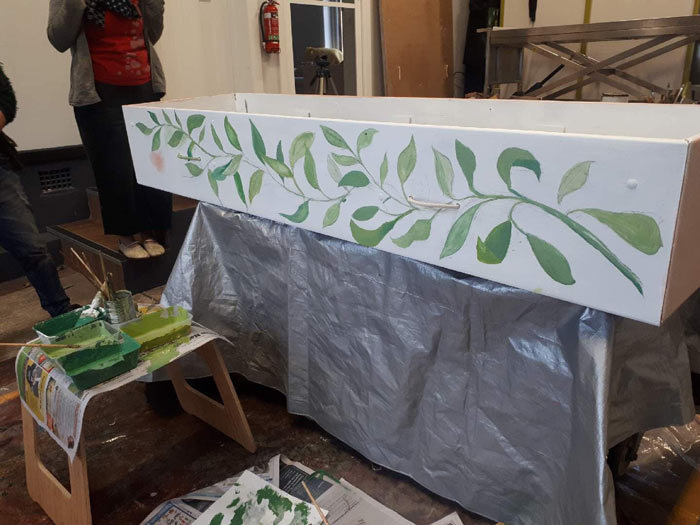
In fact, throughout most of Australia, you can legally arrange almost all aspects of a funeral without using the services of a funeral director.
Along with washing and preparing the body for viewing, in most jurisdictions you can:
- Transport the body from a hospital or nursing home into storage or interstate (you will need to hire a refrigerated transfer service for extra long trips). You can also drive it to the ceremony and the crematorium or cemetery.
- Keep the body at home until the funeral, even after an autopsy.
- Have the ceremony at home or elsewhere, rather than hiring a space at a cemetery or crematorium.
- Arrange the ceremony and organise speakers (and a celebrant if you want one).
- Buy a coffin or shroud directly from a supplier – or if you’re in Tasmania, a coffin club can help with building your own.
- Carry the coffin as a pallbearer along with family and friends.
- Lower the body into the grave or watch it go into the furnace at the crematorium.
But don’t feel as though you have to do any of this. Knowing more about what’s involved in the process can help with picking – and only paying for – the services you want a funeral home to take on.
Why people call funeral directors
When Ryan’s mother died in their home in Canberra in 2014, there was no one around who knew what needed to be done.
“When you’re in that situation and haven’t been in it before, you don’t know what you have to do for cremation or other aspects, who needs to come,” he says. “A doctor comes to certify but then you’re like: what now?”
“There’s a certain price you are willing to pay to not have to worry about logistics.”
In Ryan’s case, the price was $7500 paid to a funeral home.
Given the complex regulations and practicalities involved at a time of grief, it’s unsurprising that almost all consumers opt to offload these on to a funeral director.
Not to mention that most of us don’t know the answer to the perennial question: when someone dies, what do you do?
There’s a certain price you are willing to pay to not have to worry about logistics
Ryan
For families of the six out of seven people in Australia who die in hospital or residential aged care, the first step is covered; staff will get a doctor to sign a certificate of cause of death.
Outside of those institutions, if a person dies unexpectedly, you call 000 or the police.
If a person dies at home and it was expected, you call their doctor for the certificate of cause of death, which needs to be issued before a funeral can be arranged.
The next step, according to the funeral industry, is to contact a funeral director.
Hospitals and aged care homes, needing to quickly move bodies out of their facilities, offer the same advice – as do government websites.
And while it’s possible to organise most parts of a funeral yourself, there are significant barriers to doing so.
What you need – and don’t need – for a funeral
Basic
Doctor will supply Medical Certificate of Cause of Death and additional documents for cremation or burial
For cremation, a second doctor needs to fill out a separate form
Lowest cost option is a direct cremation (no service, no attendance)
In most cases you’ll need a coffin, but a shroud is accepted for some burials
Register the death with your state office of births, deaths and marriages
Extra
Anything else is extra, and up to you: funeral director, ceremony, catering, service booklets, flowers, burial, newspaper notice etc.
Bringing the body home?
You can keep the body at home. In most cases, you don’t have to embalm
You can use a cold plate, fans and air conditioning to keep the body cold
Barriers to DIY funerals
Registering a death
First off, registering a death isn’t made easy for those of us who aren’t in the funeral business.
The forms themselves are straightforward, but several offices for births, deaths and marriages allow only funeral directors to use the online registries.
The paperwork also often incorporates sections for funeral directors to fill out, which is the case with the death registration forms in New South Wales and Queensland.
The Queensland form is, at least, available online; as is the ACT death registration form.
It’s the first of many moments after a death when you might find yourself locked out of making your own arrangements because the system isn’t set up for you. It’s set up for funeral directors.
Though this makes registering a death inconvenient, it’s still possible to do yourself.
You can contact your local births, deaths and marriages office for a form and provide the medical certificate of cause of death or coroner’s notice of release, along with a document issued by the cemetery, crematorium or government authority approving the burial or cremation.
The NSW registry told us you can fill in the funeral director’s section of the death registration form yourself, while the Queensland office said: “You can complete the form to the best of your knowledge… If there is more information required you will be contacted.”
Regulations
Although Western Australia is the only jurisdiction to state, specifically, that you have to use a licensed funeral director – or obtain a permit by a cemetery board to arrange a funeral without one – other state regulations include sections that complicate a person’s ability to take matters into their own hands.
Although you can keep the body at home for up to five days in NSW, if you want to prepare and place the body in a coffin anywhere other than a mortuary, you’ll need approval from the secretary of NSW Health.
Tasmanian legislation requires that a body comes from “the premises of a prescribed business” in order to cremate it.
Across Australia, cemeteries and crematoriums often won’t deal directly with customers and will tell you to book through a funeral director with a registered business.
Logistics
Factoring in the logistics of storing, transporting and caring for a body, getting together the range of forms required for cremation or burial, as well as event planning, hiring a funeral director starts to look not only like an attractive option but a necessity.
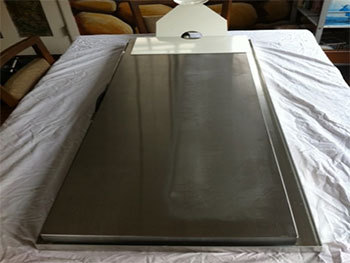
For Ryan, it was worth paying a company to project manage his mother’s funeral and he was happy with the service.
But he says he might have done things differently had he known that embalming wasn’t necessary to keep his mother’s body at home for a few days, or to have an open-casket ceremony.
According to funeral planners who use them, a refrigeration plate is just as effective as a mortuary for storing a body and preventing leaks or odours.
In another example of how funeral choices are limited by a lack of knowledge, these plates are commonly used in the Netherlands but aren’t familiar to most people in Australia.
Doing a funeral your way
To strip things right back, a direct cremation – meaning no service, no attendance – is the cheapest option after a death.
The rest is extra, and you can mourn as simply or as lavishly as you wish.
Not all crematoriums offer direct cremation, however.
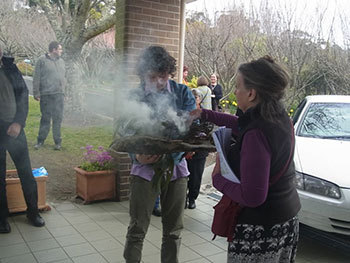
“We could have burnt only but we would have still had to pay as if we were hiring the chapel,” she says.
Rather than driving for two hours to get a direct cremation at another crematorium, she chose to have a ceremony at the local one.
Forbidden from conducting an Indigenous smoking ceremony inside the chapel, Elspeth felt lucky to be able to hold one at her house for her former partner, a Gundungurra man.
She played the clapsticks as a Darug man burned gum leaves in a hardwood bowl, trailing the smoke through the house and out onto the driveway where the troop carrier was parked, ready to bear away the coffin.
“It’s really important to me, given how I wasn’t able to have a useful family relationship… at least I gave him a good death and the children will always remember that the Aboriginal community honoured him,” Elspeth says.
“They will always remember that he was in our house for those five days.”
At least I gave him a good death
Elspeth Hull
Her then 19-year-old daughter spent time alone with her father’s body, talking to him. But her brother, 16, found it too painful to go into the room.
Friends who visited the house appreciated the chance to say their goodbyes.
Elspeth was grateful for what she felt was a personal and meaningful celebration. Funerals don’t always work out this way, however.
In part 2 of our investigation, we take a deeper look into how companies control the way we grieve – and how much we pay.
Lead image credit: Community Coffin Club in Ulverstone, Tasmania
This is one of four instalments in our funerals investigation. You can also read





